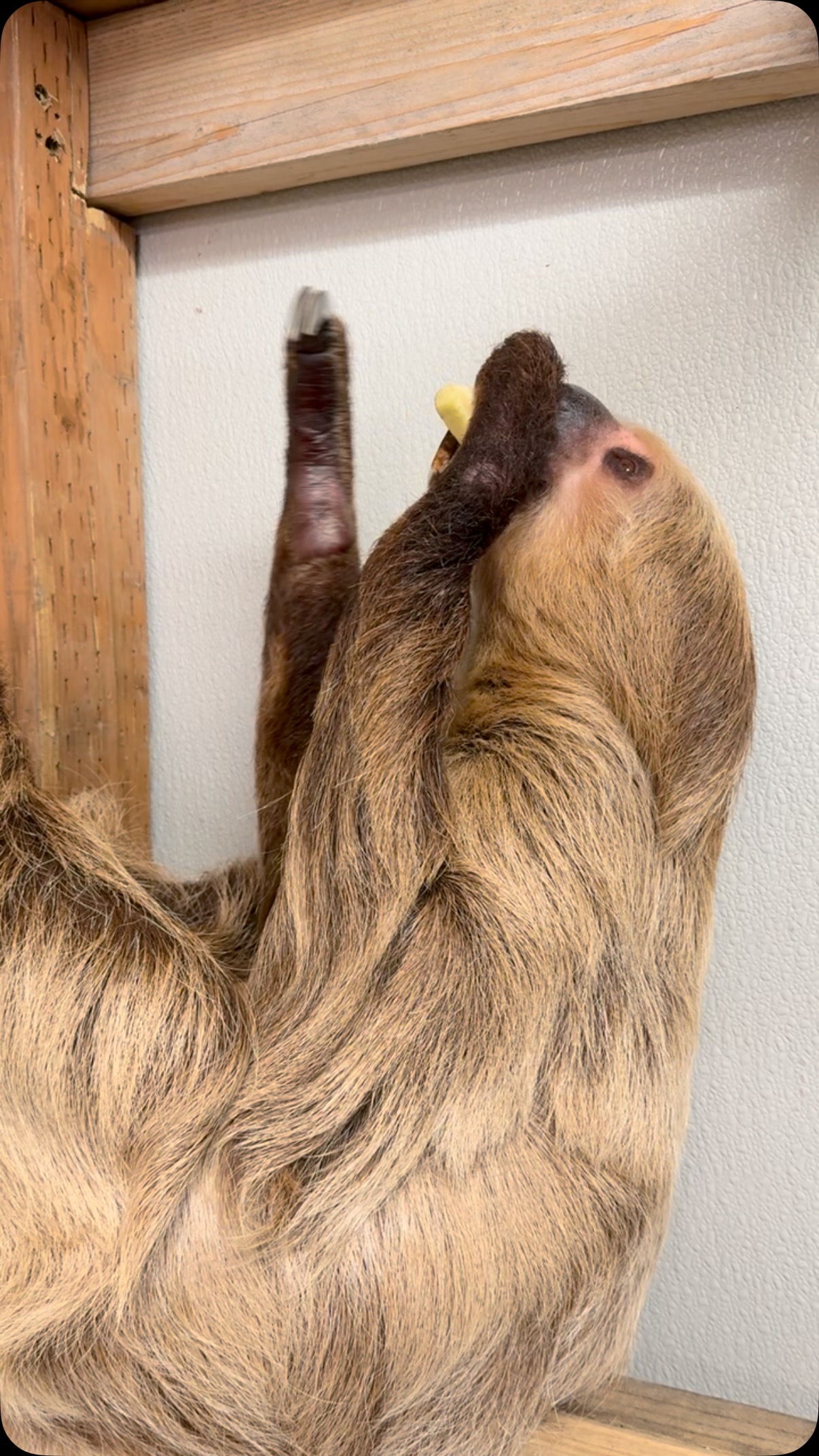- Understanding the lifestyle and behaviors of the Hoffman’s two-toed sloth.
- Examining Winston’s specific dietary habits and why he enjoys eggplant.
- The role of zoos in preserving sloth species and educating the public.
- Insights into how sloths represent broader concepts in wildlife conservation.
- The importance of taking a mindful approach to animal care and observation.
Taking a moment to appreciate the slower rhythms of nature, this Saturday morning we turn our attention to Winston, the Hoffman’s two-toed sloth. His leisurely pace serves as a gentle reminder of the subtleties found in the animal kingdom and reminds us of the importance of patience and observation in wildlife conservation.
Understanding the lifestyle and behaviors of the Hoffman’s two-toed sloth is crucial for anyone interested in zoology or wildlife conservation. These sloths, scientifically known as Choloepus hoffmanni, inhabit the tropical forests of Central and South America. They are arboreal, spending most of their lives in the treetops. Adapted for life in the canopy, their long limbs and curved claws allow them to navigate through the foliage with ease. Their slow metabolism is a defining characteristic, influencing both their movement and dietary needs.
Winston, like his fellow two-toed sloths, moves deliberately. This slowness is a survival tactic, helping him evade predators by blending into his surroundings. Unlike their three-toed relatives, two-toed sloths have a more diverse diet, which includes leaves, fruits, and even small prey. Winston’s preference for eggplant, as captured in a charming Instagram reel, showcases the sloth’s adaptability and unique dietary habits. Eggplant might seem like an unusual choice, but it’s an excellent source of fiber and nutrients that support the sloth’s slow metabolism.
The choice of food is a critical aspect of zoo management, especially for animals like Winston. Zoo nutritionists and caretakers must consider the natural diet of sloths and replicate it as closely as possible within captivity. This requires an understanding of their physiological needs, ensuring they receive appropriate nutrients while also keeping them engaged. The careful selection of foods like eggplant can enrich their diet and stimulate natural foraging behaviors.
Zoos play a pivotal role in wildlife conservation, providing a safe haven for species that may be threatened in the wild. They also serve an educational purpose, helping the public understand the importance of species like the Hoffman’s two-toed sloth. By observing Winston, visitors can gain insights into the lives of these creatures, fostering a deeper appreciation and desire to protect their natural habitats.
Sloths like Winston also symbolize the importance of conserving biodiversity. Their existence highlights the delicate balance within ecosystems and the impact of human activities on these environments. Educating people about the intricate relationships between species and their habitats is vital for promoting sustainable practices and conservation efforts.
Taking a mindful approach to studying and caring for animals like Winston emphasizes the importance of patience and observation in zoology. Understanding the needs, behaviors, and preferences of each animal enables a more effective approach to their conservation and care. This approach not only improves the well-being of individual animals but also supports broader environmental goals.
The lifestyle of Hoffman’s two-toed sloths offers valuable insights into the complexities of the natural world and the role each species plays in its ecosystem. Learning from animals like Winston reinforces the value of slow, deliberate actions in our conservation efforts. As we take it slow this Saturday morning with Winston, we are reminded of the need to pause, observe, and appreciate the intricacies of the world around us.
*****
Source Description
Taking it slow this Saturday morning🦥
📸Winston the Hoffman’s two-toed sloth eats a piece of eggplant.


